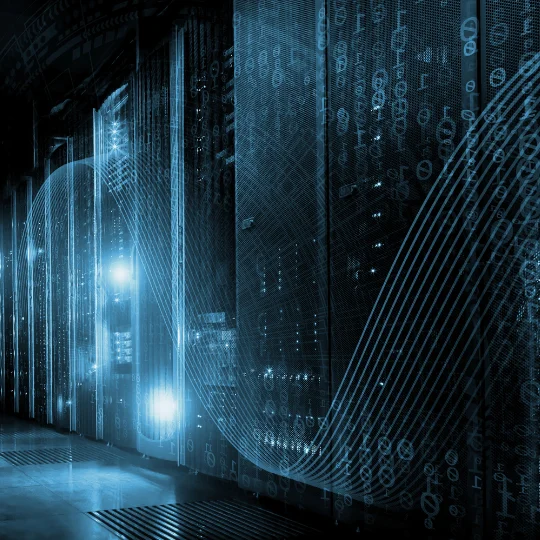Power & Cooling: The Hidden Bottlenecks of AI Data Infrastructure
13 Nov, 20255 minsThe AI boom has a power problemArtificial intelligence has become the driving force behind a...

The AI boom has a power problem
Artificial intelligence has become the driving force behind a global data-centre construction surge. From London to Frankfurt to Singapore, developments are racing to deliver facilities capable of handling GPU-intensive AI workloads. But behind the excitement lies a growing challenge; there simply isn’t enough power to go around.
As AI models grow larger, so do their demands. A single hyperscale facility training next-generation models can consume as much electricity as a small town. Grid access is strained, substations are at capacity, and even the biggest operators are competing for connection slots.
Across Europe, grid-connection queues can stretch for seven to ten years, delaying multi-billion-pound projects. In the UK, this has sparked a wave of strategic partnerships between utilities, developers and government to fast-track approvals, but the backlog is still immense.
AI and the Future of Data Centres
Why AI changes everything
Traditional data centres were built for CPU-based workloads: lighter, steadier, easier to cool. AI workloads are the opposite, spikey, energy-hungry, and heat-intensive.
Today’s high-density racks draw 40-60 kW each, far beyond the 5-10kW design standard of legacy sites. Cooling systems that once relied on chilled air are buckling under the load, prompting a rapid move towards liquid and immersion cooling to dissipate the enormous heat generated by GPUs.
The result? A new era of data-centre design, one that’s reshaping every layer of infrastructure, from electrical architecture and M&E engineering to network topology and real-estate planning.
How AI is Redefining Data Centre Design
Gridlock: the invisible constraint
Even the most advanced design means little if the grid can’t support it. Developers across Europe and North America are facing connection gridlock, where capacity exists on paper but not in practice.
Regions once considered prime, London, Dublin, and Amsterdam, now face moratoriums or severe connection limits. Meanwhile, secondary hubs such as Madrid, Warsaw and Oslo are seeing new momentum as operators look for “power-rich” regions with renewable potential.
The irony? AI is both a catalyst for innovation and a stress test for national infrastructure. Without accelerated grid investment, the AI revolution risks being throttled not by technology, but by power.
The Power Problem Behind AI Growth
The cooling race: innovation under pressure
If power is the first bottleneck, cooling is the second. AI servers produce far more heat than traditional systems, and with global temperatures climbing, the challenge is only intensifying.
Technologies gaining traction include:
- Direct-to-chip liquid cooling - coolants flow directly over the chip surface for maximum efficiency.
- Rear-door heat exchangers - capturing and dissipating heat before it escapes the rack.
- Immersion cooling - entire servers submerged in dielectric fluid for ultra-dense environments.
Beyond the technology, sustainability has become the defining factor. Water use, carbon footprint, and waste-heat reuse are now board-level metrics. Many new builds are adopting closed-loop systems and renewable energy integration to reduce their environmental impact while maintaining uptime.
Sustainable Data Centres in the AI Era
The human factor: bridging the skills gap
Hardware and grid connections may grab headlines, but people keep the systems running. The global shortage of M&E engineers, electrical specialists and data-centre operations professionals is now one of the biggest risks to growth.
As AI-ready infrastructure becomes more complex, demand is rising for talent with hybrid expertise, people who understand both IT and facilities, from GPU configuration to liquid-cooling maintenance.
Recruiters are already seeing strong demand for:
- Power engineers skilled in high-density design
- Cooling specialists with thermodynamics knowledge
- Automation and control engineers managing AI-assisted monitoring systems
- Data-centre operations managers with sustainability experience
At Hamilton Barnes, we’re supporting clients across Europe and the US who are scaling their AI data-centre operations, helping them secure the engineers who will future-proof their builds. Discover where our expertise lies and how we can help you to scale up your AI Data Centre team by visiting our AI Datacentre Page.
Skills Shortage in AI Infrastructure
What’s next for AI data centres
The next generation of data centres won’t just host AI; they’ll be designed by it. Predictive analytics and AI-driven control systems are already optimising cooling efficiency, routing power loads dynamically, and detecting component failure before it happens.
But technology alone isn’t enough. Success will depend on collaboration between governments, accelerating grid expansion, developers investing in renewable microgrids, and recruiters building the skilled workforce to sustain them.
AI may be driving demand, but power, cooling and people will determine who leads the next wave of innovation.
“As AI reshapes infrastructure, those who can balance energy, efficiency and expertise will define the future of the data-centre industry.”
Looking to power your future? Talk to us.
If you’re seeking the best network engineers on the market to help pioneer growth for your business, get in touch with our Data Centre Team today, and we will connect you with the talent you need to meet your recruitment needs.
Alternatively, if you’re looking for your next career opportunity with the latest vacancies and are unsure which tools employers are looking for experience in, speak to our expert team today, who will help you navigate the exciting, fast-paced job marketplace.




